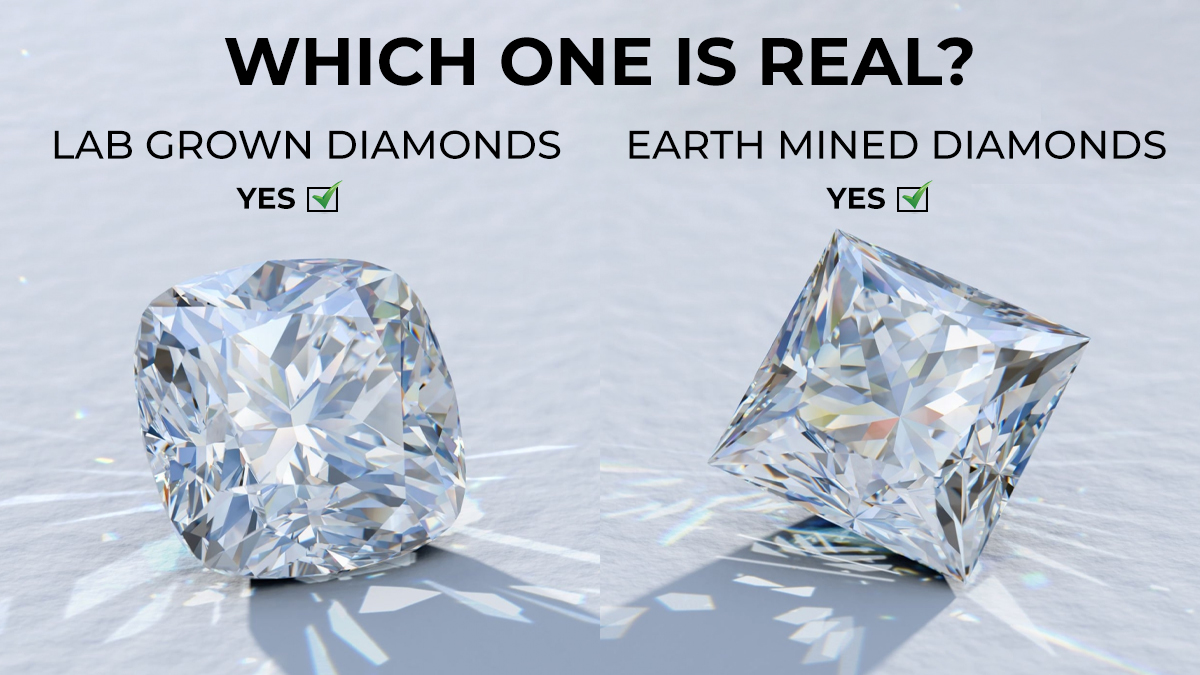Lab grown diamonds are identical to natural diamonds in terms of chemical, physical, and optical. Lab-created diamonds have become increasingly popular. They are a more affordable and environmentally-friendly alternative to naturally-mined diamonds.
Some people continue to question whether these diamonds are "real or not". Diamonds grown in a lab have the same physical and chemical characteristics as natural diamonds.
Therefore, they are real diamonds. They sparkle beautifully and are real diamonds with the same crystal structure as natural diamonds. Additionally, lab-grown diamonds have the same Mohs hardness of 10/10.
Lab grown diamonds are less expensive and as durable as natural diamonds. The use of lab-grown diamonds in diamond engagement ring and other diamond jewelry is growing in popularity. But before making a purchase, you should always be aware of what you're purchasing. Read this article to discover the truth about lab-grown diamonds.
How The Lab Created Diamonds Are Made?
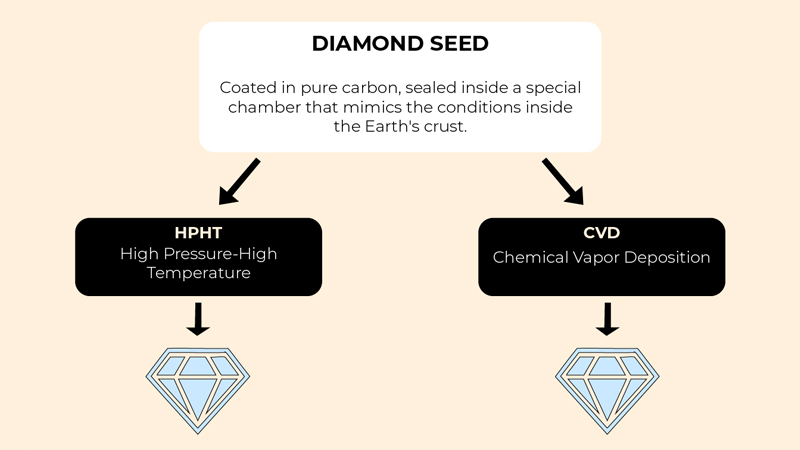
Lab diamonds are created using the same high pressure and high temperature conditions found in the Earth's mantle. This replicates the natural diamond formation process.
Scientists can create diamonds from a microscopic diamond seed. They use carbon atoms from various sources such as graphite or methane gas. The process requires the appropriate conditions.
The CVD process begins similarly. A diamond seed is subjected to high pressure and high temperature conditions. It is comparable to the HPHT process. The CVD method, on the other hand, requires releasing carbon emissions into the environment.
The lab created diamonds that are identical to natural diamonds in terms of their crystal structure, physical properties and chemical composition. The 4 Cs carat weight, color, clarity, and cut are used to grade both the diamonds lab created and natural. Lab-grown diamonds can be made in controlled conditions, resulting in fewer impurities than natural diamonds. This means they may be of a higher quality grade than some natural diamonds.
The Origin of Diamond
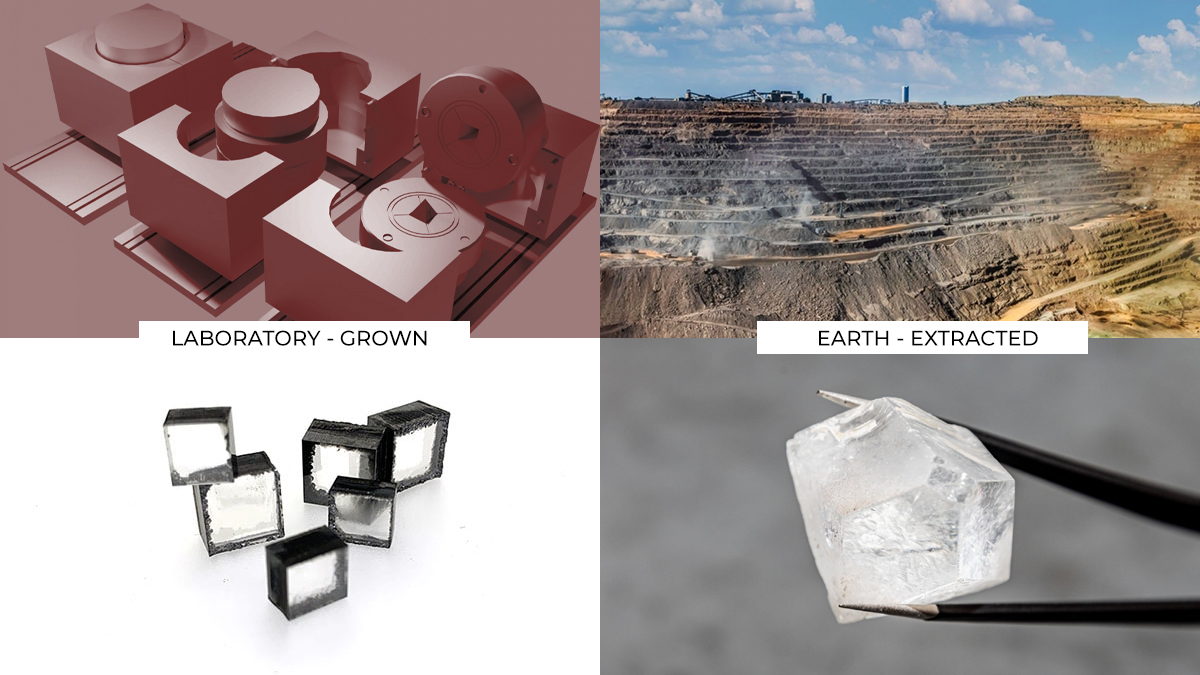
The origin of diamonds is the actual difference between the lab grown and natural diamonds. Lab-grown diamonds can be produced in a few weeks or months. Natural diamonds, however, take billions of years to form deep underground. The structure and properties of diamond itself are unaffected by this change in origin, though.
The one question that some people may have whether lab-grown diamonds is ethical. Mining of natural diamonds has been linked to human rights violations and environmental harm in many parts of the world. This is a major concern that needs to be addressed.
Lab-grown diamonds are often seen as more ethical. They do not involve exploiting labor or damaging ecosystems.
It is important to note that lab-grown diamonds do not involve environmentally damaging activities. However, the energy required for the production process can have a significant effect on the environment. A number of countries have introduced regulations to ensure that lab-grown diamonds are produced in an environmentally friendly way.
Lab-grown diamonds are produced in a laboratory setting. This allows for quality assurance monitoring. As a result, customers receive the best possible product.
The Price of Diamond
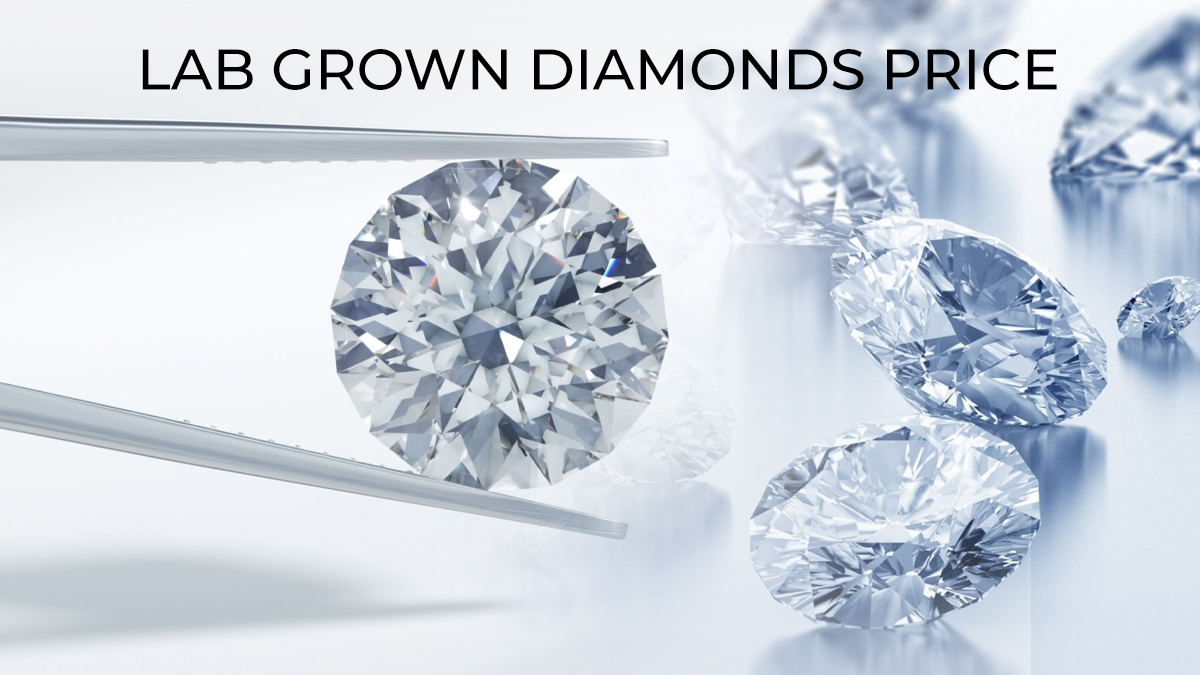
Another concern is whether lab grown diamonds will affect the price of mined diamonds. Lab-grown diamonds are usually cheaper than natural diamonds. However, natural diamonds are not expected to be replaced entirely by man-made diamonds.
Lab-grown diamonds are more economical than natural diamonds. Natural diamonds require a long growth period and intensive care before they can be sold. Lab-grown diamonds, however, can be produced quickly and still look beautiful.
But in addition to supply and demand and production time, the 4Cs are also taken into account when determining diamond prices. Natural diamonds will always be regarded as a valuable and precious item with a certain aura of mystique.
Can a Diamond Tester Detect Lab Grown Diamonds?
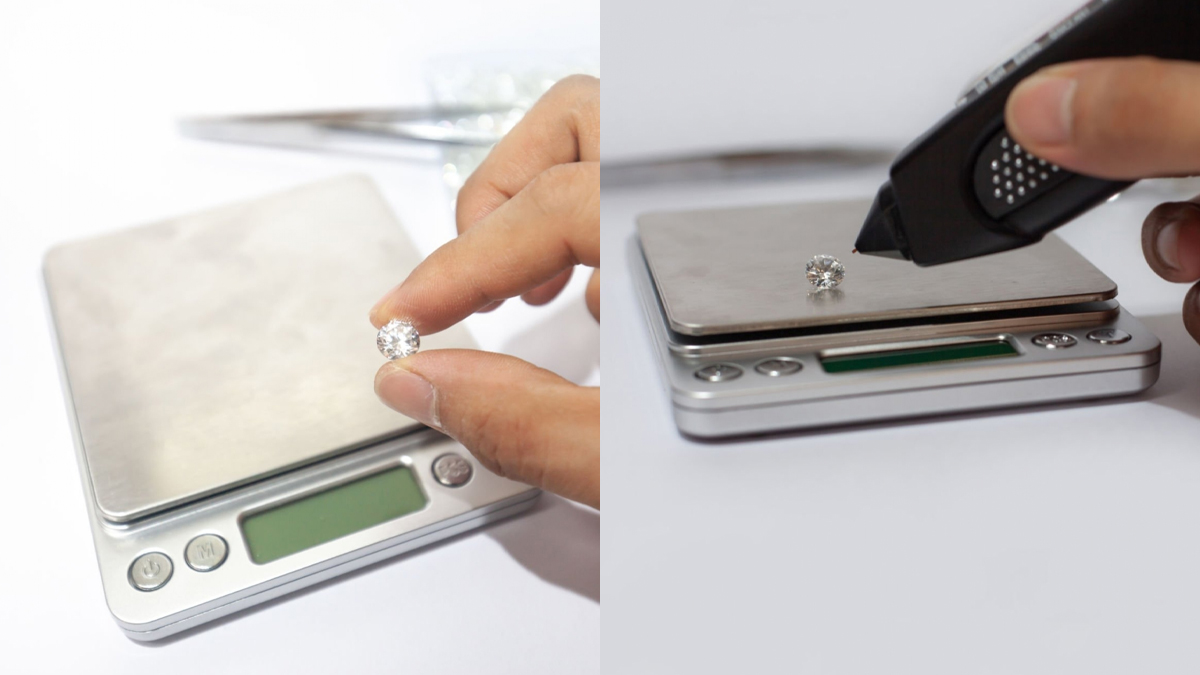
Since lab-grown diamonds are chemically, physically, and optically identical to naturally mined diamonds, they should pass testing as real stones.
Therefore, laboratory-created diamonds will really pass a diamond tester. Thermal conductivity is the method used by a diamond tester to evaluate whether a stone is a diamond. Other diamond simulants like cubic zirconia have modest thermal conductivities, diamonds have a high thermal conductivity.
As a result, the heat from the tester immediately passes to the diamond when it is placed on the stone. Heat won't transmit as quickly if the stone is not a diamond. Lab-grown diamonds conduct heat similarly to naturally mined diamonds. They also pass a diamond tester as they are made of the same material.
Lab-grown diamonds have the same chemical, physical, and optical properties as naturally mined diamonds. Therefore, these diamonds will pass a diamond tester since the tester is based on the thermal conductivity of the stone.
Diamonds have a higher thermal conductivity than other diamond simulants, such as cubic zirconia. When placed on the stone, the heat from the tester will quickly pass to the diamond. Lab-grown diamonds have the same thermal conductivity as mined diamonds and will also pass the test.
How to Tell if your Lab Diamond is Real?
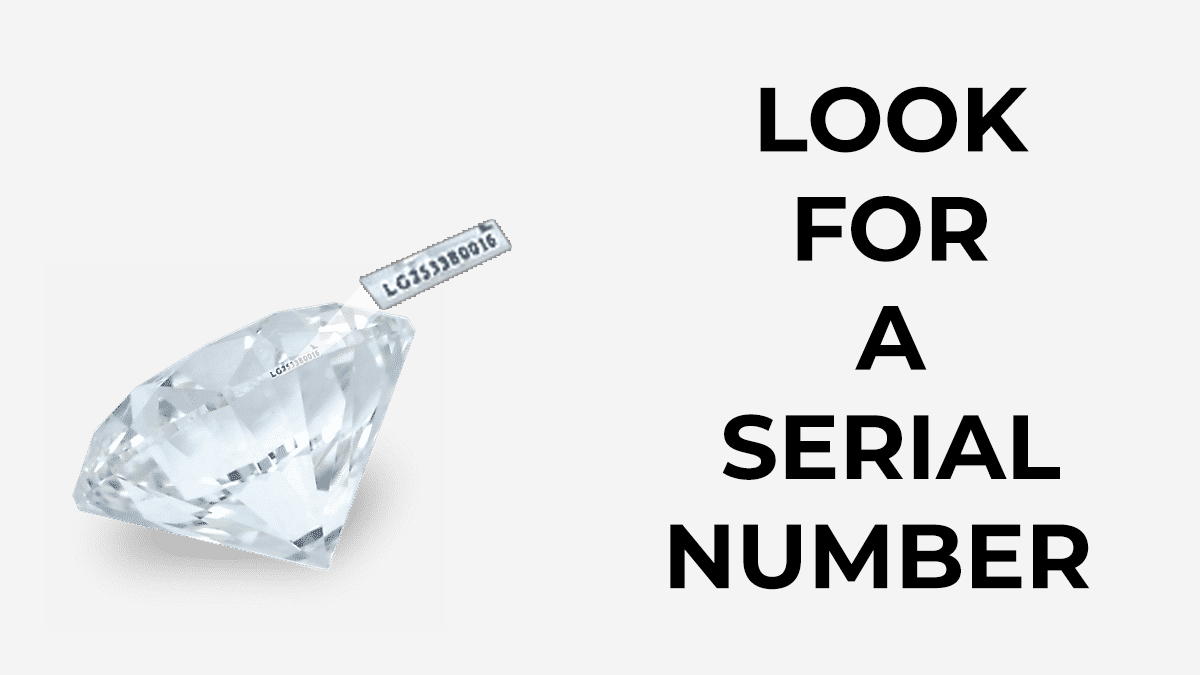
1. Inspect the girdle of the diamond, all certified diamonds carry a laser inscription over the girdle. In the case of lab-grown diamonds, the lab also engraves them. This inscription should match the inscription on the grading certificate. You cannot see this inscription with the naked eye. To do so, you need a loupe. Alternatively, you can take it to a jeweler for examination.
2. Send the diamond to a gemological grading lab. The lab can determine if it is lab grown or natural by using the right technology. For example, examining how the diamond responds to UV light.
3. Look for diamond color, like cubic zirconia, fake diamonds have no color at all. Your diamond is likely genuine if seen from the side. A trace of yellow or brown will be visible. Some moissanite, nevertheless, are nearly colorless. Diamonds that appear colorless from the front may appear white. We recommend viewing your diamond from the side to get an accurate impression of its color. Keep in mind that this test only applies if you purchase a diamond that falls within the G–Z color range. Diamonds classified as D, E, and F will be completely clear and not display any hue. You need a loupe to examine the inscription. Alternatively, you can take it to a jeweler for further inspection.
Conclusion
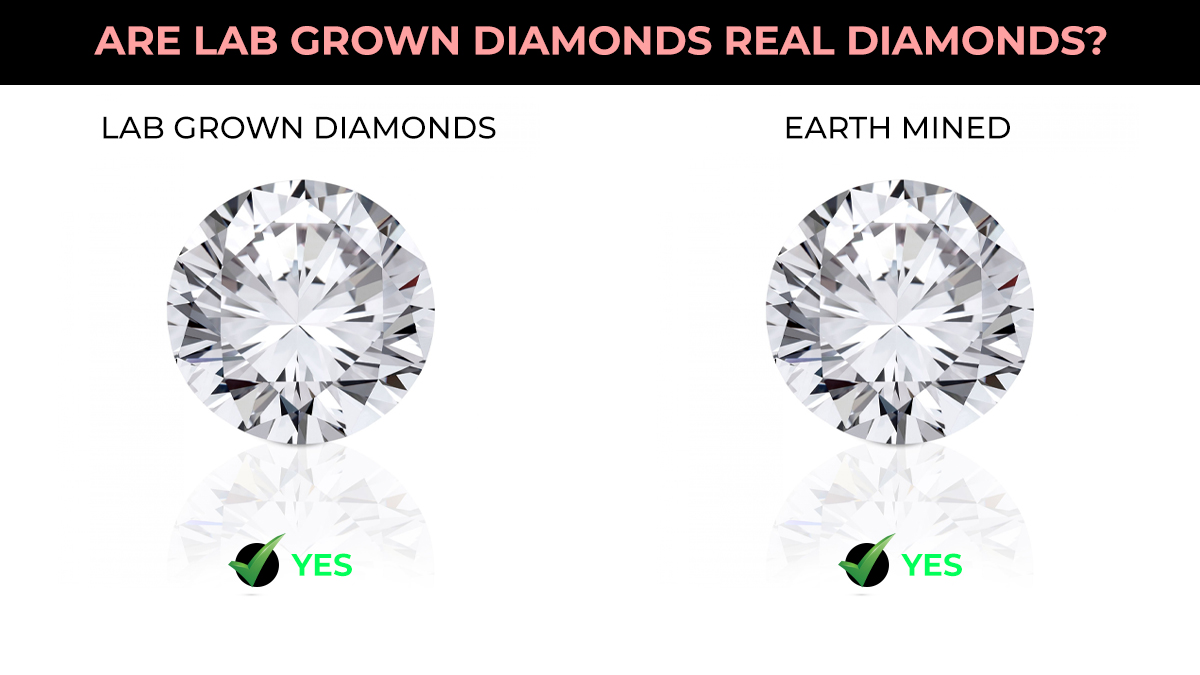
Synthetic diamonds have the same physical and chemical characteristics as diamonds found in nature. This makes them impossible to differentiate from genuine diamonds. They are often regarded as more ethical and environmentally friendly than real diamonds because they are grown with advanced technology.
Even though they can be less expensive than natural diamonds.
According to reports, laboratory-grown diamonds are 40% - 50% less expensive than mined diamonds. Their activities do not conflict with one another. If you are going to buy lab grown diamond, it's crucial to conduct thorough research and pick a reputable jeweler.

